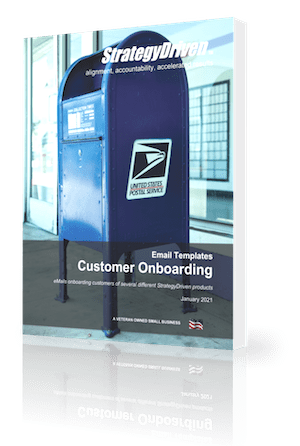Revolutionizing Production: Essential Equipment for Modern Manufacturing
Have you ever wondered how the products you use every day are made so quickly and accurately? The answer is that manufacturing has come a long way from using simple hand tools and basic machines. Today, modern manufacturing relies on advanced technology that allows for fast, efficient, and precise production in almost every industry.
Well, as competition grows and technology keeps changing, manufacturers need to use the latest tools to stay successful. In this article, we’ll explore the world of modern manufacturing equipment and highlight the must-have tools and technologies for manufacturers these days.
1. Industrial Robotics
Robots are revolutionizing the manufacturing landscape by eliminating repetitive tasks and increasing output rates. These remarkable machines handle a variety of tasks, from welding and assembly to painting and packaging, all with incredible speed and precision.
Advanced robots now even have artificial intelligence (AI) capabilities. This feature allows them to learn, adapt, and work more efficiently over time. With the introduction of collaborative robots, or in short, cobots, humans can now work alongside these automated assistants. This, undoubtedly, combines human workers’ creativity and problem-solving skills with robots’ precision.
Key Benefits:
- Increases production speed and quality.
- Reduces human risk in hazardous tasks.
2. Advanced Inspection Systems and Tools
Quality assurance is essential in today’s manufacturing, and advanced inspection systems are at the forefront. High-tech vision systems use AI and machine learning to automatically spot defects, measure sizes, and check product quality.
While AI-powered systems excel at detecting even the tiniest flaws, tools like the PDR slide hammer are equally vital for making precise adjustments and repairs, particularly in the automotive industry. PDR slide hammers enable technicians to remove dents accurately without damaging the surrounding area. This precision ensures that the quality and appearance of products remain excellent, even after production.
However, when it comes to buying these tools, the manufacturer must decide only after a proper study. Best of all, some reputable online websites provide qualitative tools at reasonable prices. Hence, consider buying from there, which will give you the required tool of the desired quality.
Key Benefits:
- Ensures consistent quality and compliance.
- Reduces human error in inspections.
Fact: PDR stands for “Paintless Dent Remover.” Hence, as the name suggests, the PDR slide hammer is designed to help technicians remove dents without the need for repainting or body filler.
3. 3D Printing
Additive manufacturing, commonly known as 3D Printing, has opened doors to custom production that wasn’t previously possible. From prototypes to full-scale production, these printers can create complex parts layer by layer with various materials, including metals, plastics, and composites.
It has proven to be a game-changer in the automotive, aerospace, and healthcare sectors. Not only custom production, these printers allow for on-demand production, which leads to reduced waste.
Key Benefits:
- Enables rapid prototyping and production.
- Allows for the creation of complex designs without additional cost.
4. Automation and Conveyor Systems
Automation systems, including conveyors, keep production lines moving smoothly. To be precise, conveyors can transport materials and products through various stages of the manufacturing process. That automatically reduces the need for manual handling.
Modern automation systems are equipped with sensors, real-time data analysis, and control systems. These modern technologies enable manufacturers to monitor production flow and quickly address bottlenecks or issues. Moreover, this equipment is useful for assembly lines, packaging, and warehousing alike.
Key Benefits:
- Improves workflow and reduces downtime.
- Enables real-time monitoring and adjustments.
5. Smart Sensors and the Internet of Things (IoT)
In today’s digital manufacturing landscape, smart sensors and IoT technology play a vital role in capturing real-time data. These smart sensors track equipment performance, product quality, and environmental conditions, sending this information to a central system. This real-time data enables predictive maintenance, allowing manufacturers to fix equipment issues before they lead to breakdowns.
Additionally, IoT-enabled devices improve traceability during the production process, making it easier for manufacturers to maintain quality control and comply with regulations.
Key Benefits:
- Enhances maintenance with real-time monitoring.
- Enables data-driven decision-making for efficiency.
6. Augmented Reality (AR) and Virtual Reality (VR)
AR and VR are no longer just for gaming; they’re becoming indispensable tools for training and maintenance in manufacturing. Augmented Reality allows employees to visualize complex instructions and overlays during assembly or repair tasks, reducing errors and learning curves.
Meanwhile, Virtual Reality enables workers to practice in simulated environments. These practices make training safer and more cost-effective. With these technologies, manufacturers can ensure that employees are skilled, reduce errors during production, and even assist in remote maintenance.
Key Benefits:
- Enhances training effectiveness with immersive learning.
- Improves productivity and safety for employees.
Key Takeaway
In a rapidly evolving industry, staying competitive means staying at the cutting edge of technology. Modern manufacturing equipment and tools are not only changing how products are made but are also setting new standards in quality and sustainability.
Embracing these advancements paves the way for smarter, faster, and more flexible manufacturing. It empowers companies to lead in a dynamic global market.














Thanks for sharing it.